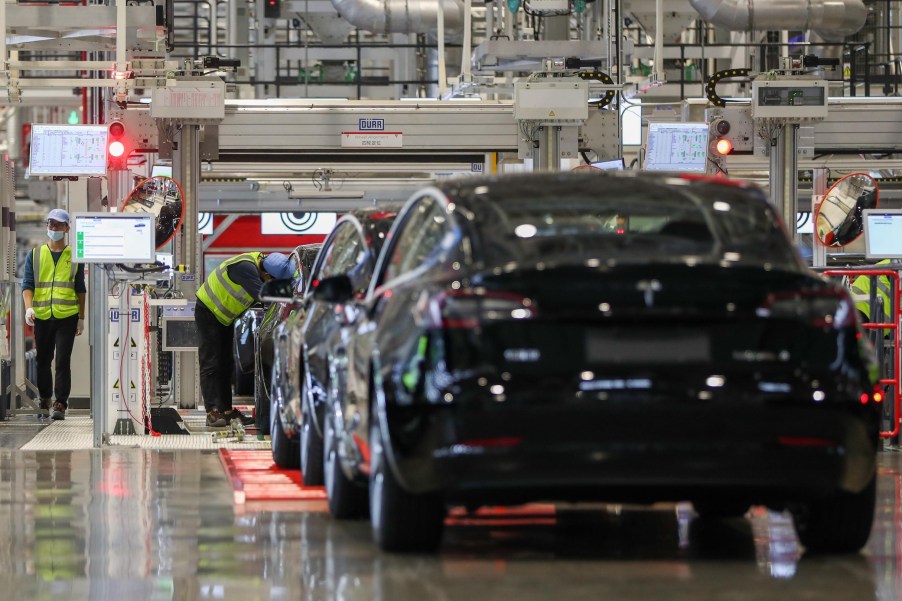
27,000 Reasons Why Your Insurance Company Doesn’t Like Your Tesla Model 3
Tesla vehicles are practically unrivaled in the electric vehicle category thanks to the automaker’s ability to create practical performers that have literally ushered in the wave of electric propulsion. And while there’s no denying that cars like the Model 3 are second-to-none when it comes to buying a full-electric compact sedan, they do have their drawbacks. And in the case of one MotorBiscuit reader, there were 27,000 drawbacks.
The Tesla Model 3 is cheap to buy, but expensive to fix
When it comes to electric cars, no car on the market comes close to the value proposition that the Tesla Model 3 imposes. In its base form, the Model 3 is able to drive up to 263 miles on a single charge, can go 0-60 mph in just 5.3 seconds, and has a top speed of 140 mph, all for a lowly sum of $37,990 (before taxes and fees). Of course, it might not be the most affordable car on the market, but if you compare it to a Nissan Leaf, it’s practically a bargain-priced supercar.
Case in point, it’s hard to beat the price of entry for a Model 3 as you can even opt for a long-range version for around $47,000 as our reader did, but he eventually learned that the reasonable starting cost comes with a higher price in the event that the car is in an accident. Or, in our reader’s case, a small fender bender.

Small crashes equate to large bills
As the story goes, our faithful MotorBiscuit reader (who would rather remain anonymous) was backing out of a parking spot when another car accidentally backed into their Model 3. As you can see from the resulting photos, the damage looks rather innocuous considering only the rear bumper and quarter panel are bent. On any normal car, that fix would probably cost under $1,000 — depending on which body shop you go to – but the Model 3 is not a normal car.
When it was all said and done, our reader was presented with a hefty bill to the sum of about $27,000, most of which was mainly due to the labor hours needed for the bodywork and paint. But it’s only a minor fender bender, right? Not really, according to the repair estimate, there was extensive work that needed to be done underneath the panels that you can see in the pictures. Those repairs included the rear panel, rear reflector, rear quarter glass, the trim around it, and even the windshield.

According to our reader, “The bumper was pushed in, that popped out, but it left the rocker panel dented. Unfortunately, under all of that, more structural stuff was bent. So they had to replace the whole quarter panel, which led to some chrome trim across the top. According to Tesla, if you mess with that trim, you need to go ahead and replace the windshield.”
Don’t worry, it doesn’t make that much sense to us either. Fortunately, insurance did pay for the repairs, which included the use of a “Celette fixture,” which is a universal jig that’s used to assess and repair body damage that costs $886 to rent. In total, the cost for the parts alone was $8,324, the labor cost $9,000, and the mechanical labor cost about $2,500.

If you buy a Tesla, get good insurance coverage
Luckily, our reader only had to pay his deductible amount for the damage, but he did add that the Tesla-approved body shop took a full 10 weeks to fix the car and it sat in the shop for such a long time that the 12-volt battery needed replacing. So Tesla’s mobile service came out and fixed it for free.
So what’s the lesson here? The main takeaway is that while Teslas are likely the best electric vehicles to buy in the current market, you don’t want to get into an accident in one. And if you do, then make sure that you have really good insurance coverage. Although, your insurance company might not have such a soft spot when you submit your claim for your Model 3.



